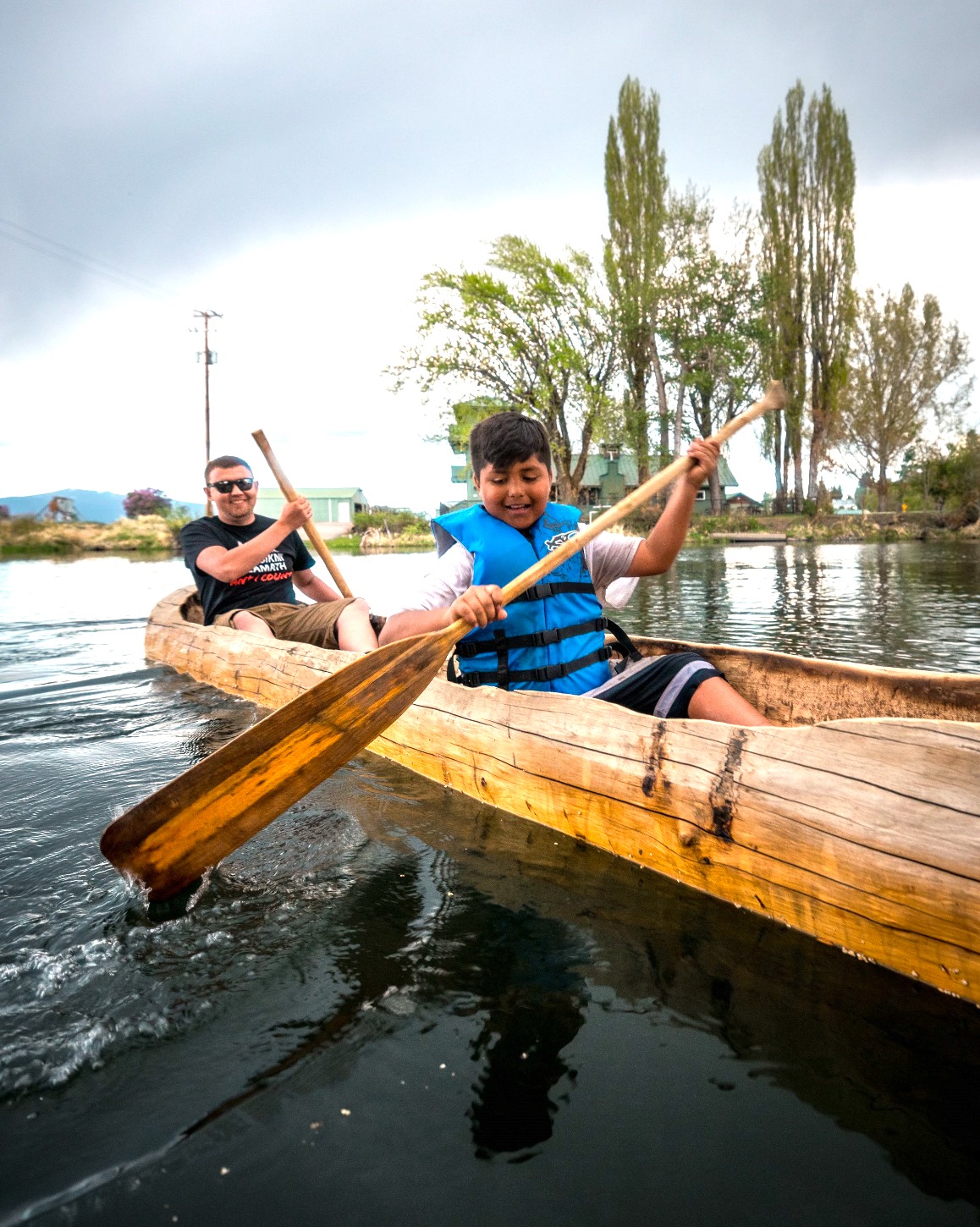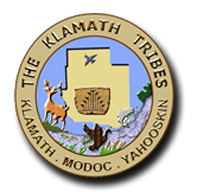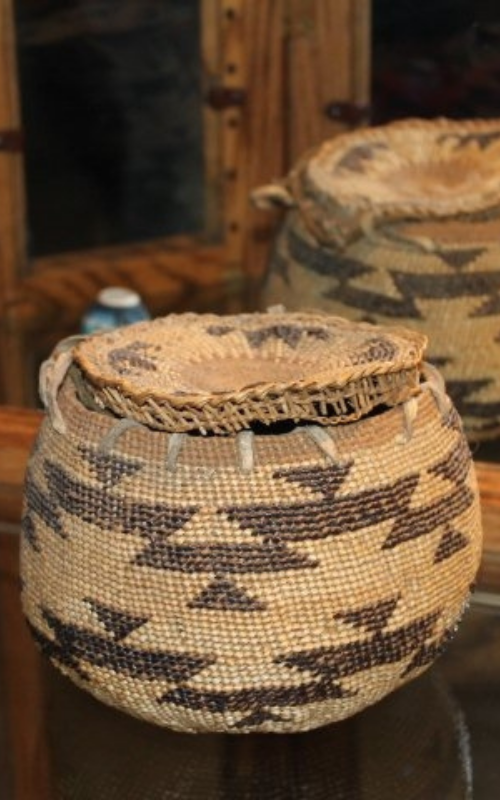Language Department

GeorGene Nelson
Language Director
Office Location:
501 Chiloquin Blvd.
Chiloquin, OR 97624
Mailing Address:
P.O. Box 436
Chiloquin, OR 97624
Phone:
(800) 524-9787 or
(541) 783-2219

Language Department
waq dal ?i gee ?ewksiknii ?elgank
How do you say that in Klamath?
This section is being presented to help keep alive and revitalize the Klamath Language, which like most other American Indian languages is quickly losing its fluent speakers.
Presented primarily for tribal members, it is a basic course endorsed by the Culture and Heritage Department. More information, a booklet and a CD are available. In addition to this introduction to writing the Klamath language, there are lessons on pronunciation (vowels, consonants, ejectives), vocabulary, grammar, and phrases with audio examples.

Our Language Story
Mechanics of Klamath Writing
There was a time before anyone had ever tried to write Klamath. Prior to that Klamath had only ever been spoken, never written.
But this is not just true of American Indian languages. It is true for all languages, including English. Writing began about 5000 years ago with ancient Sumerians and Egyptians. English first came to be written only about 1200 years ago, and Klamath only some 100 years ago.
After the white man came into this region, the Klamath people began learning English. Everyone, of course, continued to speak the native language. But, unlike most people here today, they were bilingual. They spoke both languages.
Each language came to fill a special niche in Tribal society.
Each language came to fill a special niche in Tribal society. The Indian language served as the vehicle for the Indian culture. It spoke to personal, intimate, family needs. And English came to function as the instrument of larger Tribal concerns, of legal, official affairs. English became the medium of contact with the outside world.
English is the language of the public schools and all other formal education, and therefore it, and not Klamath, has served the purpose of literacy.
But meanwhile, the Klamath language has not been passed on to the younger generations, and consequently, it has survived only with those few elders who remember it, and in books where it has been preserved in writing.
Several systems of spelling have been used to write Klamath. Albert S. Gatschet, who wrote down much during the last century, used one system. And various Tribal members have used their own systems. But the system employed by M.A.R. Barker in his publications of 1963-64 most accurately represents all of the sounds of the Klamath language.
For people who know the language well, any spelling system that they can easily read is adequate.
But when there are not many who speak it anymore, and when people are wanting to learn it, then it is best to have a spelling system that records all the subtle distinctions of the original sound system.
When one already knows the language, he can usually figure out what someone has tried to write. But when one does not, then an accurate spelling system makes it possible to pronounce words that one has never heard before.
This little book uses the system developed by M.A.R. Barker, with a few minor exceptions which will be explained below. The major reason to use the Barker system, besides it phonetic accuracy, is that students of the Klamath language should be prepared to use use Barker’s materials. Barker’s Klamath Dictionary is classic. It is a wonderfully rich storehouse of the Klamath language.
The development of a truly phonetic spelling system
The development of a truly phonetic spelling system requires a correct assessment of the number of sounds which are important in a language, and second, the assignment of specific symbols to represent each of those sounds.
Barker’s system employs the Latin alphabet, but with some special modifications, such as the use of the apostrophe (‘) , a small upper case G, and certain capital letters (L, M, N, W, and Y)
Klamath has 35 distinctive sounds and therefore needs 35 distinctive symbols. Before one can read Klamath , one must learn what these sound symbols represent . This explained below with examples which are pronounced on the tape or CD which comes with the phrase book and which will be reproduced here. The student is advised to study this section carefully. Familiarity with the writing system is a necessary tool in learning Klamath as a second language.
A final note
In any language, words are often shortened in rapid speech. In English for example, people actually do not say want to but rather wanna when speaking. In writing, however, it is preferable to use want to. In Klamath also, words are often shortened in rapid speech. When spoken very clearly and distinctly, the Klamath say san’aaWawli for “want”. But this word is almost always shortened to san’aawli in actual speech. Also, the future suffix -wapk is commonly shortened to -wak or -wok. Another example is the word for “bread”, baal’aa?as in Barkers Klamath Dictionary. Barker’s spelling accurately represents the way the word was pronounced carefully for the tape/CD which accompanies this course. Yet in rapid speech, most people usually shorten the word to baal’aas. In this course, we follow the custom of spelling the words as spoken when they are pronounced very carefully. This does not mean they should never be read the shorter way. It is just that it is customary for writing to reflect a more formal style of speech.

Pronunciation Guide
In addition to this introduction to writing the Klamath language, there are lessons on pronunciation (vowels, consonants, ejectives), vocabulary, grammar, and phrases with audio examples.
Vowles
Coming Soon
Consonants
Coming Soon
Ejectives
Coming Soon


